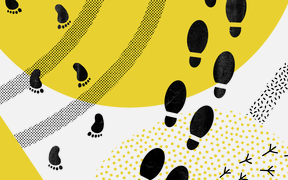In 2013, I gave a keynote presentation at the main conference of concert hall acoustics in Toronto. At that time, we presented a new way of thinking about how to assess and measure concert halls. At the beginning of the presentation, I was wearing a dark green Marimekko corduroy suit. In the introduction, I explained that history looks like this and now we should go in a different direction. At this point of the presentation, I put on the orange jacket. I wore it for the rest of the day at the conference, thinking it was a joke.
However, at the next conference everyone asked me where the orange jacket was. It then became a brand colour for our research team. Since then, I have always worn the orange jacket at conference presentations. People in our field know it all over the world. Otherwise, it's my Wappu jacket.
What's it like to walk in Tapio Lokki's shoes?
If I look at my own career, the skills I learned in the Student Union’s Representative Council and as a chairman and artistic misleader at Retuperän WBK are the skills I need as a department head: how to get along with people, how to lead a group, how to motivate people and get them do something without getting paid. A role model is important.
These skills you don’t learn in lectures. On the other hand, I use the skills when I give a lecture, for example to keep people interested. I can sense if students aren’t able to keep track of a lecture. I then go back a bit and think about what might make them interested. I prefer to approach things through a practical example. Similarly, if playing was too difficult at Retuperä, it was not worth telling the players to practise at home. Instead, we could try playing three times slower – it could be fun. You can always find another way.
Without Retuperä, I probably wouldn't have come up with the orange jacket either. Retuperä taught me to think about whether there was a way to turn something upside down. When I was a kid, I didn't necessarily have that much self-confidence. It grew in the student union when I learned to take responsibility for organising big parties in Dipoli or Retuperä concerts at the Finlandia Hall.
What are your experiences of merging different department cultures?
The Department of Media Technology and two other School of Science departments became part of the huge Department of Computer Science in 2015. We lost the good spirit of the Department of Media Technology and a reasonably small and integrated community where people gathered every Friday for coffee, buns, and presentations.
I realised then that my research was too far away from the core areas of the new department, and I started to gravitate to a research position in acoustics at the School of Electrical Engineering.
The departmental merger of 2023 combined two departments of the same size at the School of Electrical Engineering, both with about ten professors. The two departments already had a joint bachelor’s program, and the merger was a smooth one. The new department didn’t destroy the old department cultures either.










